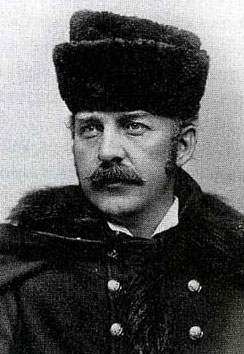As Miles went into his winter quarters, the coming months were expected to be filled with tedious garrison duty. In mid-October, however, Sitting Bull returned. He and Gall had come back from Dakota Territory with a contingent of as many as six hundred Hunkpapa, Minneconjou, and Sans Arc Lakota warriors.
Between October 11 and 15, Sitting Bull's warriors raided 22nd Infantry Regiment supply trains on the north side of the Yellowstone. On the latter date, Elwell Otis parleyed with a group of Lakota and they agreed to leave the supply trains alone.

Picture of Col. Nelson A. Miles from the book,
Encyclopedia of Indian Wars, by Gregory F. Michno.
Alerted to Sitting Bull's presence, Nelson Miles decided to go on the offensive. Taking the 449 officers and men of his 5th Infantry Regiment, Miles set out to track the Lakota. It took just two days, and on October 20, the 5th Cavalry located the Lakota on Cedar Creek about twenty miles north of the Yellowstone. Sitting Bull said that he wanted to talk to the 5th Infantry commander, whom the Lakota had dubbed "Bear Coat" because of his heavy winter overcoat.
The two leaders parleyed and argued for the better part of two days, with Miles demanding that Sitting Bull take his band back to the reservation, and the Lakota insisting that he and his people were not and would never be "Reservation Indians."
On October 21, the talks broke down and Miles unleashed his army. Supported by artillery, Miles forced the Lakota-which may have outnumbered the 5th Infantry Regiment two to one-onto the defensive. Miles chased Sitting Bull downstream on Bad Route Creek to the Yellowstone, which the Lakota crossed on October 24. As Miles now suspended the chase, the Lakota had been forced to abandon a great deal of their gear, not to mention horses and large stockpiles of food.